Eight students from Year 9 and 10 formed a group to compete in the international First Lego League Challenge, which was themed around the cargo journey this year. Students were tasked with creating a solution to a real-world problem, that also met with environmental considerations (the Innovation Project). Students were asked to create a robot design from scratch as well as create code to complete a series of challenges on the map below (the Robot Build and Missions).
Each of these sections have been presented to a team of our engineers on the event day, 4th Feb 2022. The students were using Microsoft Teams to present their ideas live as well as submitting their final approach to the challenges later in the day via a live demonstration.
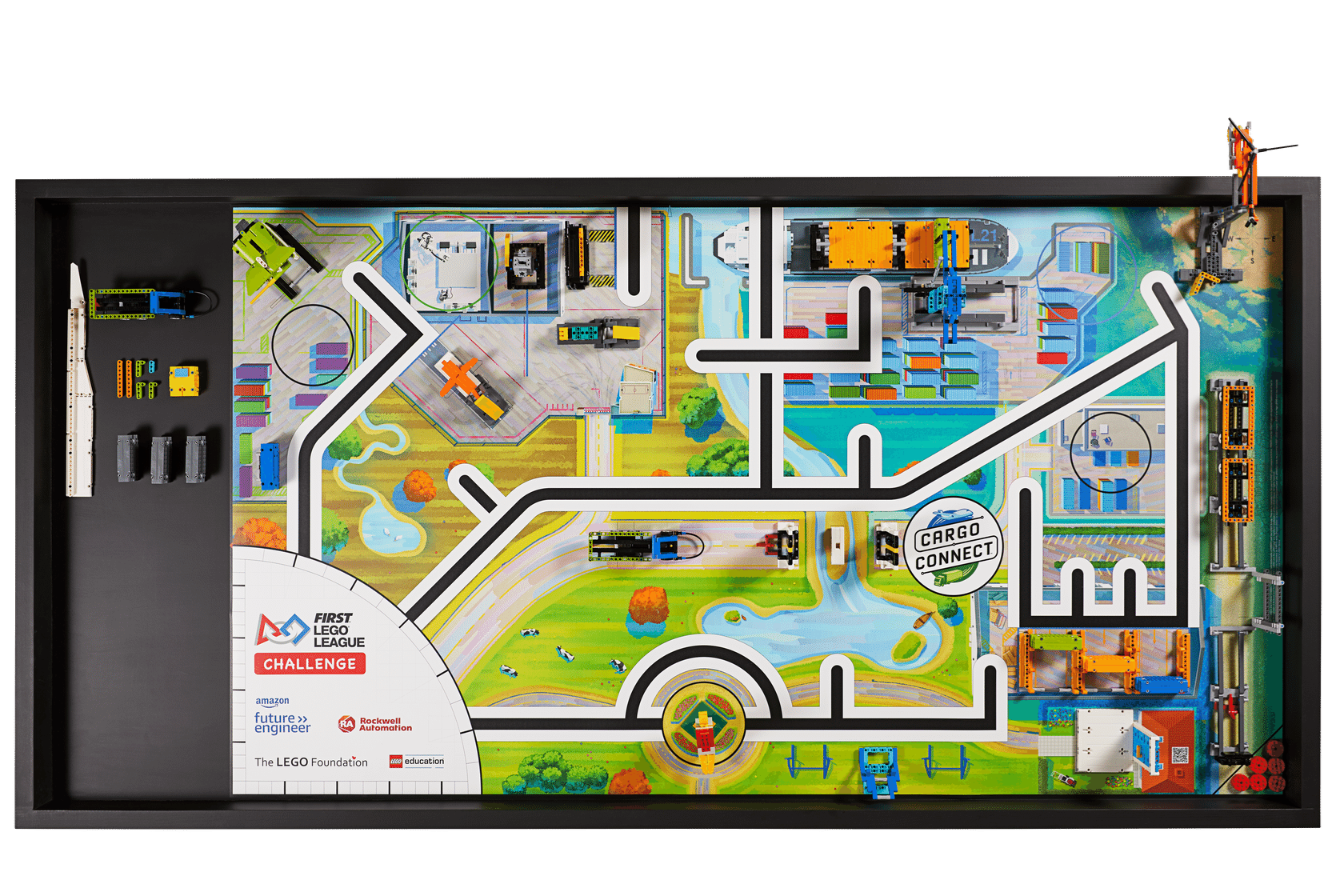
Information about the missions and what our students were tasked with can be found here: https://highcliffe.school/l/FirstLegoLeagueChallengeMission
Our students decided to develop a rolling robot style, called K8 who would be dispatched from larger trucks and visit people who had ordered individual products.
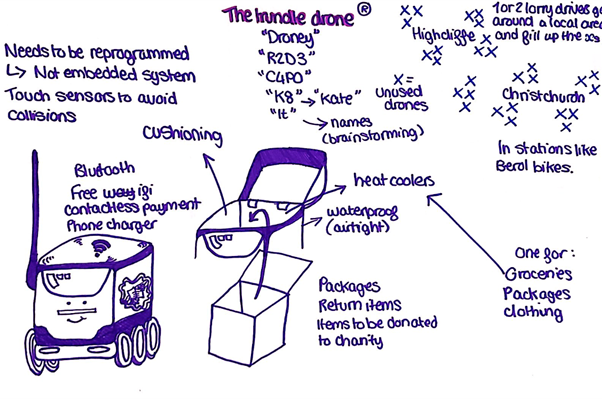
They also had to make a facsimile of this product using the Lego, as one of the challenges was to drop this off in a location on the map.
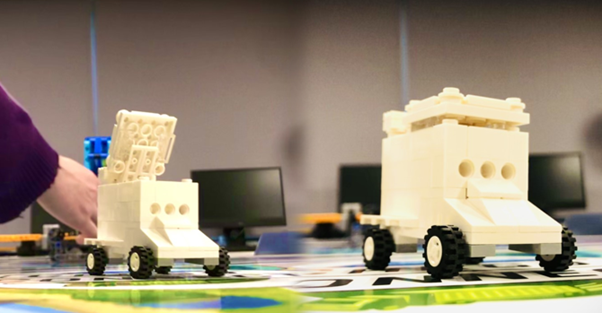
Their plans for this product included a mechanism to interact with the product via an app, as planned and designed below.
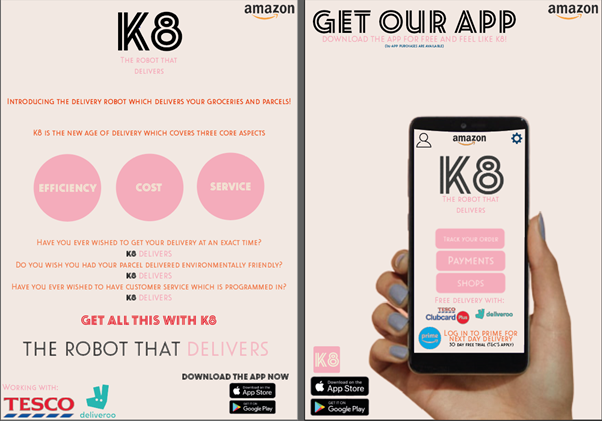
Innovation Project Feedback - "Excellent thoughts on how to increase the products usability and impact on the wider world. Good thoughts on environmental impacts - these are key for engineers going forward."
Students were also presenting about their product (the robot design itself), and these presentations along with their interactions in the question-and-answer session, were used to illustrate the teams core values. Key elements established by the organisation to demonstrate teamwork and professionalism during the challenge. The students made the robot with 3 motors that were able to control it on the map, as well as the third motor that was designed as a lifting mechanism to interact with the more complex challenges. They also had several different attachments to swap over the to complete the different challenges.
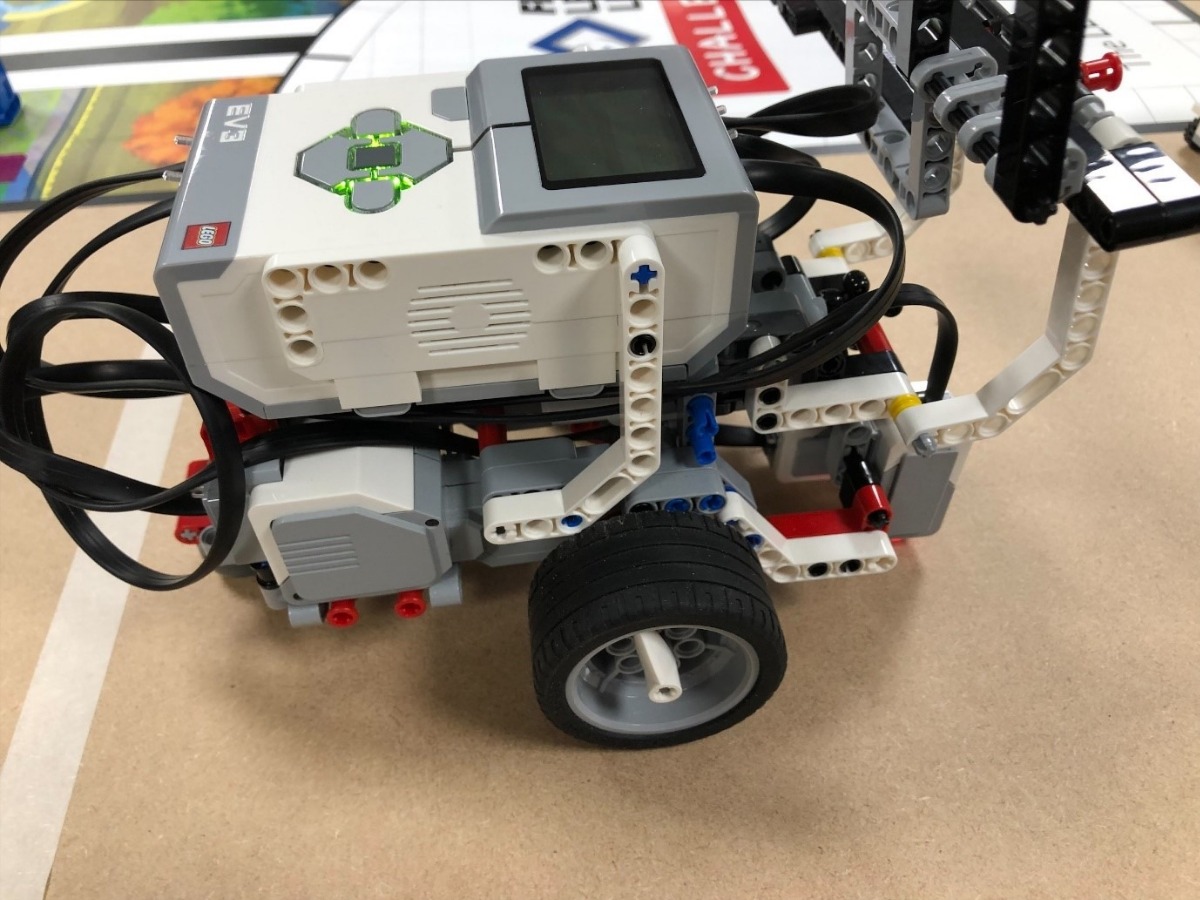
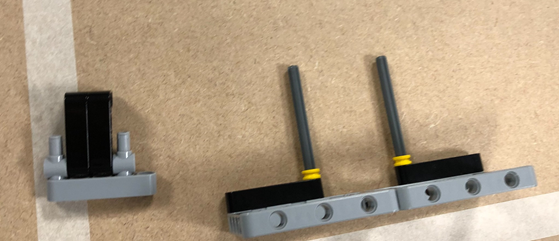
Robot Build - "Brilliant use of time to code solutions that were achievable. Excellent team work to develop codes and robot designs. [You all] did super well in the time you had [and] worked really well as a team with clear, defined roles."
Core Values - "Had a clear process for achieving the end goal and this was executed really well. Could see they worked well as a team."
Finally, the students had to complete their ‘live’ run of the map. They had been working up to this for several weeks, developing their code and their robot design. You can see the approach that they have taken from the diary below. The last session before the 4th February saw their first submission, which unfortunately didn’t succeed in any of the planned challenges. That was all to change, as they were able to work on their code during the event on the 4th February and this additional time meant they were able to try again in the live session. Tensions were high during this time but, after a minute of us all holding our breath, a cheer rang out as every one of the planned challenges were successfully complete and we achieved an amazing 190 point (10 more than we expected as the chicken statue was still standing).
Mission Feedback - "Brilliant run, really efficient at completing multiple missions in single runs. impressive considering the short time practising."
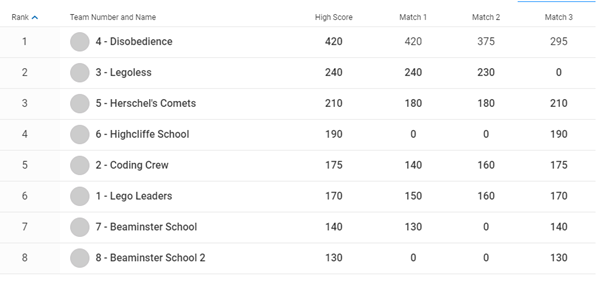
Session Diary
On week one we were told about the cargo connect and practised code and introduced to each other as it was mixed year groups.
On week two we split into two groups: one focused on coding and one on designing. We also began the Innovation Project by making a mind map and put our ideas then swapped teams halfway through, which helped us get to know each other a little more. This would be helpful in the coming weeks.
We first designed a flatbed style truck for our robot as we didn’t have the map yet. We made prototypes for carrying and loading cargo on to a truck. Then we started to complete more elements of the Innovation Project which helped us clarify the ideas for K8, developing this by brainstorming for the solution.
We had a refresh after Christmas and carried on with making our robot and advancing with K8. We developed ideas and improved upon the design to make it more efficient and solving problems that came with previous iterations of the design.
When we got the cargo connect map we were able to see the style of challenges we faced more clearly, which helped us to progress on the challenges. We began the engine flip challenge and built up the robot and continued to develop our innovation project on K8. After this we chose to focus on the ‘pushing’ style challenges, such as the platooning trucks, cargo ship and helicopter supply drop (which you can see on the video). We found these were simpler than tasks like the cargo plane and allowed us to work and progress more efficiently and smoothly.
On the day of the competition we were able to presented K8, the innovation project to the two judges live via Teams and explained how to the judges how our ideas for the given cargo problem came together and how we adapted them to overcome certain problems. We also presented our robot design and were delighted when it completed all the tasks successfully and more! We were excited and proud to receive some amazing feedback for this, such as “did super well in the time you had.” “Worked really well as a team with clear, defined roles.”
Owned by: | Last Published: 24/02/2022 12:08:16 | Next Update: N/A